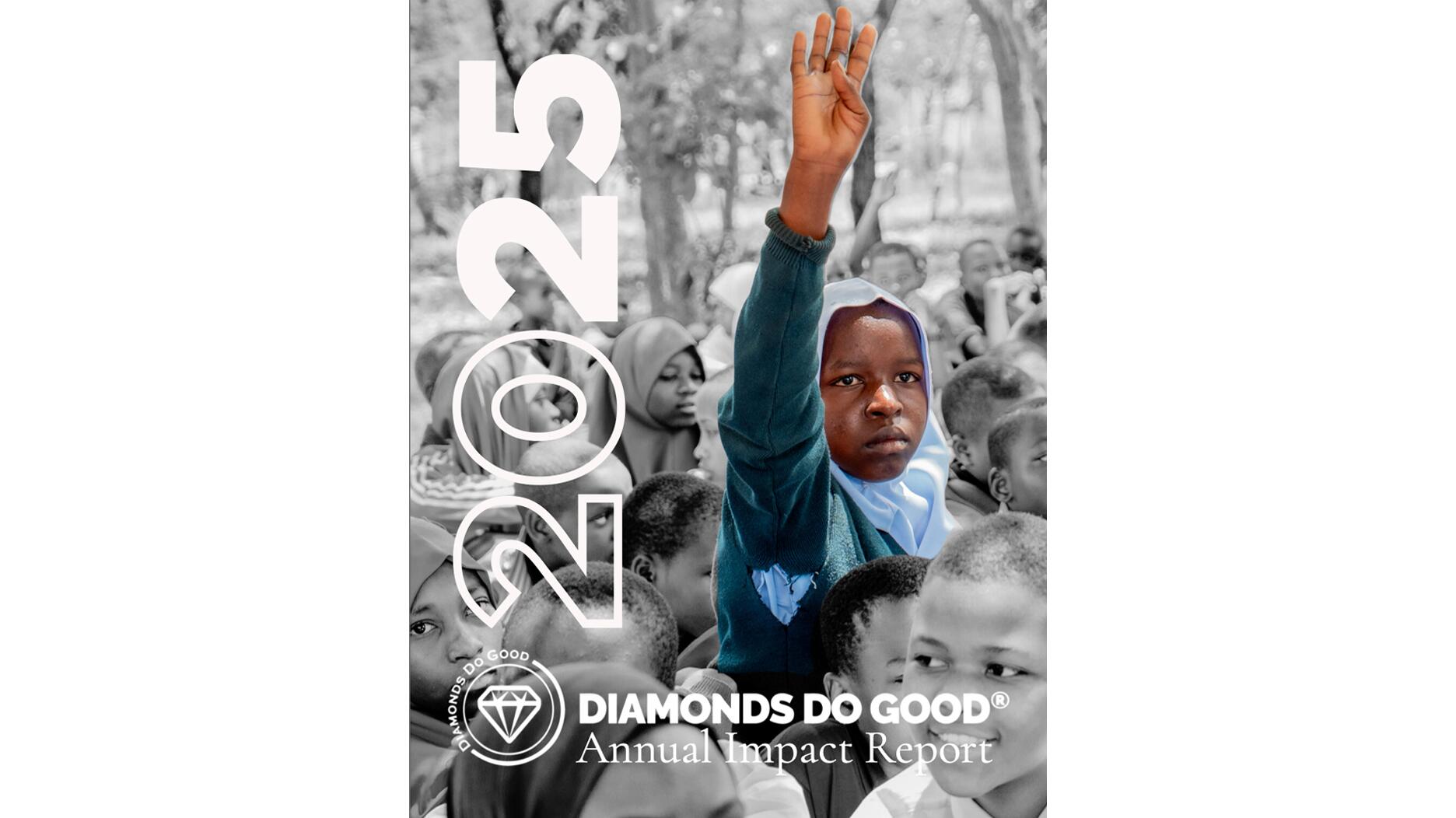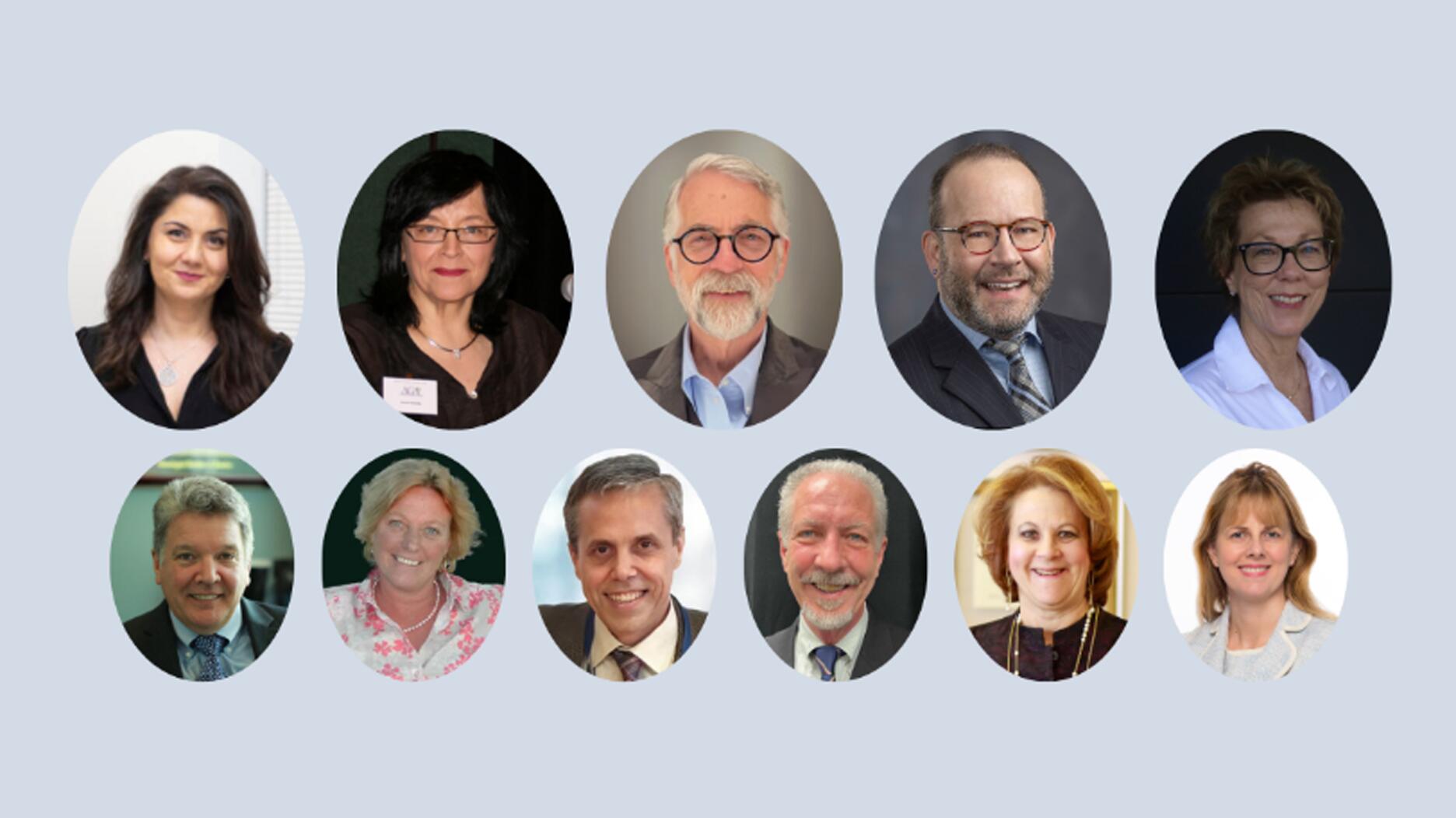A Day in the Life: Angela Bigg, Head of the Diavik Diamond Mine
Bigg is the first woman to lead operations at the Canadian diamond mine.

The decision made Bigg the first female to lead the mine and its 1,100 employees.
She is one of the few women in the world to run a major diamond mine. Her appointment comes at a time when companies are recognizing the benefits of increasing diversity and equity in the workplace, particularly at the highest levels, and the career difficulties often encountered by women and minorities—including those highlighted in a recent report released by Rio Tinto—are being brought to light.
Bigg joined Rio Tinto in 2005, taking jobs in her native Australia as well as Mozambique, South Africa, and now Canada.
In an email Q&A, Bigg detailed a day in her life as the head of Diavik and shared her perspective on being the first woman to hold the role.
National Jeweler: Tell us a bit about yourself, outside of your career at Rio Tinto.
Angela Bigg: I grew up in Darwin, the capital of the Northern Territories in Australia, and I completed all of my education there.
The outdoor lifestyle in the Northern Territory is surprisingly similar to the Northwest Territories in Canada, except for the extreme opposites in temperature.
My first real job was delivering junk mail, or advertising leaflets, with my brother to the suburb that we lived in when I was in primary school.
NJ: Moving on to your career, you started at Rio Tinto in 2005. Were you working in mining before then?
AB: Prior to 2005, I had previously worked in Australia in the financial services industry and for the government.
I had to take some time off due to complications from a surgery and I returned to live with my parents in Darwin for about a year.
When I was able to return to work, I moved to Brisbane in Queensland, Australia where there was a good facial rehabilitation program, and I could be near my uncle and grandfather for family support.
NJ: So, why did you choose a career in mining?
AB: In the financial services and securities-dealing sectors, there is a direct tradeoff between someone who “wins” in a transaction and someone who “loses” by the corresponding amount.
I wanted to work in an industry where it was possible for multiple stakeholders to benefit from the activities.
When I was applying for jobs in Brisbane, I targeted three industries: the airlines, technology companies (in the early days of the internet), and the mining sector.
Rio Tinto was the first to offer me a job.
NJ: What is a typical day like for you? Walk us through from the start of your day until you pack it up and head home.
AB: I work both in Yellowknife, where I live, and at the mine site, which is about 300 kilometers (about 186 miles) away and is accessed most of the year only by plane.
When I’m at the mine, I am in my office no later than 6 a.m. The mine is a 24/7 operation and so there is always a lot to catch up on when I arrive in the morning.
I spend much of my time checking in with the teams and talking with employees. COVID-19 has been tough on our employees, as it has been for everyone. They are working away from their families for three weeks at a time and that can take a toll.
We’ve thankfully been able to remain open and provide stable employment throughout the pandemic, while implementing precautions to keep transmission low.
I try to get out in the field and visit various parts of the mine most days. We have both surface and underground operations and some really exciting projects, so I always enjoy getting out and talking with the teams.
Most people at the mine work 12-hour days. My days sometimes tend to be a little longer, but I try to be out of the office by 8 p.m. to give myself a break and get proper rest.
It’s a little easier to end my day at a reasonable hour when I’m in Yellowknife, but I still tend to work a little in the evenings.
NJ: What does the president and chief operating officer of a mine do? What are your responsibilities?
AB: My primary responsibility is the health and safety of the team and caring for the people I get to work with.
Diavik employs around 1,100 people and it’s my responsibility to make sure they can do their jobs safely and go home to their families.
Of course, making sure the mine is running smoothly and that we continue to have genuine dialogue with our Indigenous and government partners is also critical to my role.
NJ: You’re the first woman to lead the mine. What has that experience been like?
AB: Working for Rio Tinto, I have had some great opportunities to work in a number of different roles in many places around the world.
Being given the privilege to lead Diavik is certainly a highlight and was not something I thought would ever be a certainty.
I have been fortunate to have had a number of female leaders who have had confidence in me, and also challenged the limits I put on myself in my career.
It can be hard to believe in your own abilities to succeed, and this is why having a supportive leader, and being part of a team, can make such a difference.
The mining industry, and the North as a whole, has the benefit of strong female representation in key roles.
From the premier and the minister to the deputy minister of ITI (the Industry, Tourism and Investment department of the Government of the Northwest Territories), and community stakeholders, it is a very welcoming place to be the first female lead of one of the diamond mines.
NJ: You worked in Mozambique, South Africa, and Australia before joining the Diavik team in Canada in 2017. What would you say is the highlight of your career so far?
AB: The safety culture in mining is critical to most operations and at Rio Tinto it comes from a genuine care for people. I’ve been really proud to see people buy into the safety culture at the sites I’ve worked.
At one site, a new safety process was implemented, and safety issues were taken so seriously that when a superintendent hadn’t completed the required form to track his safety hazards, they were kicked out of the work area by someone who reported to them.
NJ: What is your favorite part about your job?
AB: My favorite part is working with the team at Diavik and seeing people develop and grow. Whilst Diavik is an infrastructure marvel in the subarctic, it is the people that make Diavik an amazing place to work.
NJ: If you couldn’t be in this field, what would you be doing?
AB: I think I’d be a librarian. Literacy is an important skill and the facilities that libraries can provide can be life changing.
They form a place in the community that is free and open to anyone to use and benefit from. It’s not only the books, but the educational programs and social opportunities that make them so important.
NJ: If you could give one piece of advice to those aspiring to work in the mining industry, what would you say?
AB: Absolutely do it. The opportunities are only limited by the limits you put on yourself.
The Latest

“Bridgerton” actresses Hannah Dodd and Claudia Jessie star in the brand’s “Rules to Love By” campaign.

Founded by jeweler and sculptor Ana Khouri, the brand is “expanding the boundaries of what high jewelry can be.”

The jewelry manufacturer and supplier is going with a fiery shade it says symbolizes power and transformation.

How Jewelers of America’s 20 Under 40 are leading to ensure a brighter future for the jewelry industry.

The singer-songwriter will make her debut as the French luxury brand’s new ambassador in a campaign for its “Coco Crush” jewelry line.


The nonprofit’s new president and CEO, Annie Doresca, also began her role this month.

As the shopping mall model evolves and online retail grows, Smith shares his predictions for the future of physical stores.

Roseco’s 704-page catalog showcases new lab-grown diamonds, findings, tools & more—available in print or interactive digital editions.

The trade show is slated for Jan. 31-Feb. 2 at The Lighthouse in New York City's Chelsea neighborhood.

January’s birthstone comes in a rainbow of colors, from the traditional red to orange, purple, and green.

Footage of a fight breaking out in the NYC Diamond District was viewed millions of times on Instagram and Facebook.

The supplier has a curated list of must-have tools for jewelers doing in-house custom work this year.

The Signet Jewelers-owned store, which turned 100 last year, calls its new concept stores “The Edit.”

Linda Coutu is rejoining the precious metals provider as its director of sales.

Sparkle with festive diamond jewelry as we celebrate the beginning of 2026.

The master jeweler, Olympian, former senator, and Korean War veteran founded the brand Nighthorse Jewelry.

In its annual report, Pinterest noted an increase in searches for brooches, heirloom jewelry, and ‘80s luxury.

Executive Chairman Richard Baker will take over the role as rumors swirl that a bankruptcy filing is imminent for the troubled retailer.

Mohr had just retired in June after more than two decades as Couture’s retailer liaison.

Shekhar Shah of Real Gems Inc. will serve as president of the Indian Diamond & Colorstone Association in 2026.

This year’s good luck charm features the mythical horse Pegasus, and is our first Piece of the Week of the new year.

Articles about crime, engagement rings, and a necklace worn in the World Series generated the most interest among readers.

As part of the leadership transition, Sherry Smith will take on the role of vice president of coaching strategy and development.

It marks the third time the country has headed the Kimberley Process. Ghana will serve as vice chair.

The new Bulova x Stetson designs highlight two animals often associated with the American West—the bison and the Texas Longhorn.

Its residency at Yamron Jewelers will run through May 2026.

From influential executives to innovative designers, we pay tribute to the people we said goodbye to this year.




























